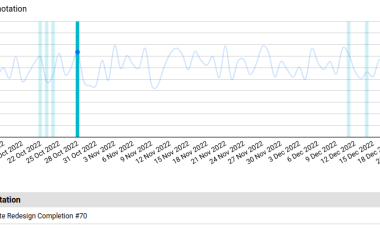How to build credibility through your website?
In the modern corporate scenario, most businesses have to constantly struggle to strengthen their website credibility. As your website is usually the first point of contact between your business and client, utilize this opportunity to create a lasting first impression. Your website should send a vibe that the organization it represents is reliable and trustworthy.
According to B J Fogg, Founder and Director, Persuasive Technology Lab, Stanford University, Palo alto, credibility is classified into four categories:
Presumed credibility: Presumed credibility describes the extent to which a person believes something because of certain general assumptions. These assumptions make people rightly or wrongly evaluate the credibility of a website.
Reputed credibility: Reputed credibility is forming opinion about a product based on a third party reference. For instance, products that have received awards are popularly assumed to be good. Example: A person will form a good opinion about a movie that has won the oscars even if he/she has not seen it.
Surface credibility: This is the first impression that an observer gets about a product. This impression is mainly based on the appearance and what is found on simple inspection. A chocolate bar with a good-looking wrapper is an example. Irrespective of whether it is good or not, shoppers will be tempted to buy and try it.
Earned credibility: As the name suggests earned credibility is the opinion earned by the product or service based on first hand experience by a user.
Now, let us consider some of the main components of a website, and find out how these four types of credibility can be built through your website.
Website Address: The website address plays a role when it comes to presumed credibility. The extensions .com, .org, .uk etc will give different impressions to the viewer. Choose the extension appropriate to your field of work and use good names.
Search Engine Ranking: Search engine rankings show the reputation of the business, thereby impacting reputed credibility. Hence, you should always aim at getting good search engine rankings.
Web Design: Web design plays a fundamental role in building surface credibility for your website. A well-designed website will be considered a credible one. Make sure that the viewer does not find any bugs on the page. Even typos and bad grammar can give you a permanent bad reputation.
Third Party Endorsements: Make sure to include customer reviews, testimonials, and case studies on your website. This would help in showing off your earned credibility from your existing clients to the potential clients who visit your website.
Contact Details: If the visitors feel that they have acquired the necessary information about your business, and gathered a good opinion from customer testimonials, they would want to contact you. Make sure your contact number and address is available for the visitors. It is a good practice to place your contact details in the footer of every page. Note that this credibility building technique can backfire if you are not available by phone or in the specified location.
Information: Provide the visitors the information they seek, make company policies and product/service information available for the visitor to read. Read more about the information a customer expects from your website here. Consider blogging as it can be useful in driving traffic and making viewers perceive you as an expert in the field. Read about why your business website needs a blog here.



